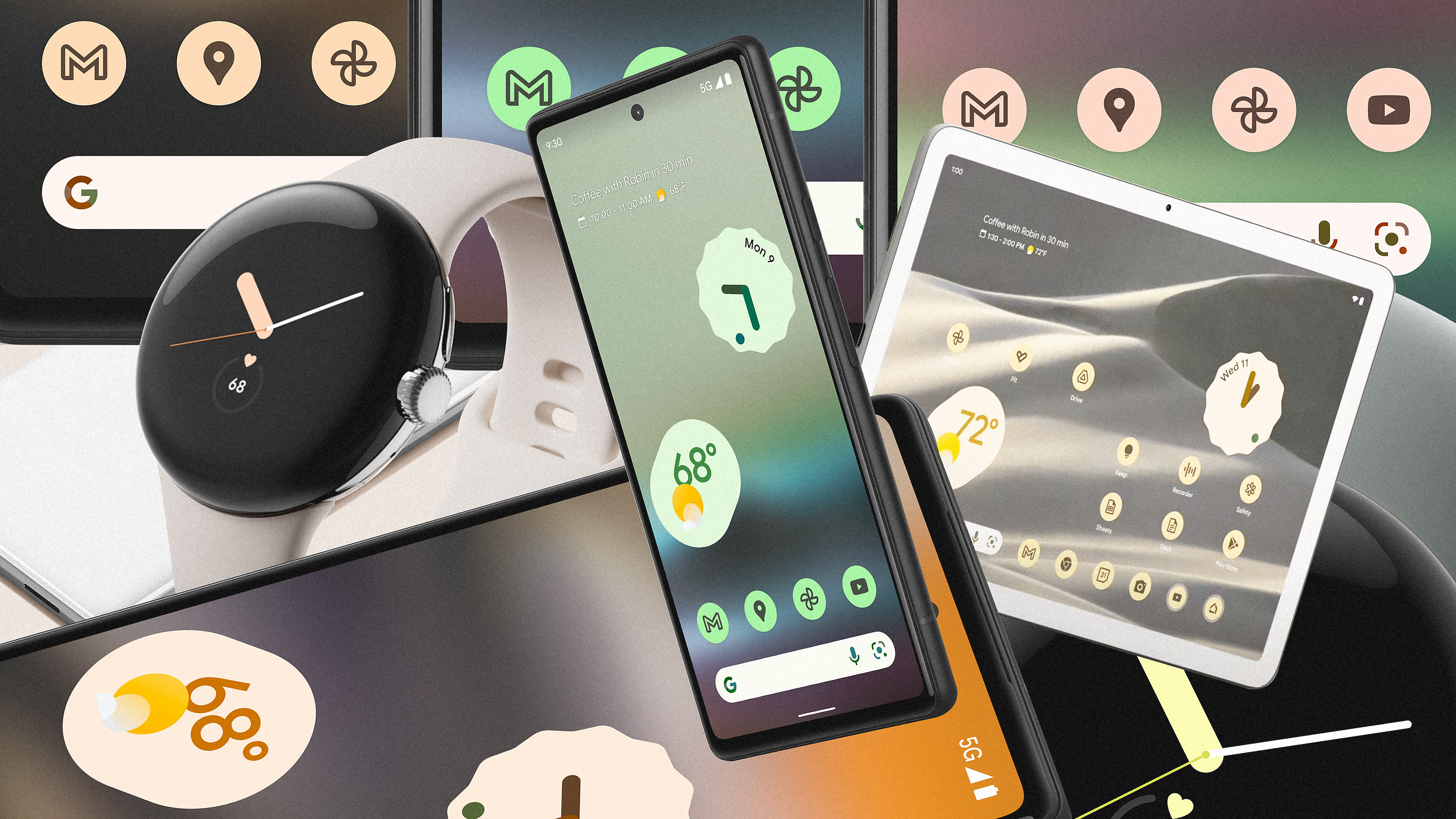It was the third time that I heard the words “ambient computing” that got my attention. During a press preview for Google’s I/O conference, the company was showing off a slew of new hardware from its talented hardware team.
There was the Pixel 6a and Pixel 7 smartphones, each with an impressive, recycled aluminum body that channels a Rothko painting. There was the new Pixel Watch, with its rounded screen that bubbles up ever so organically, like a water droplet on a leaf. And there was the new Pixel Tablet, which looks a lot like a smartphone but, you know, bigger.
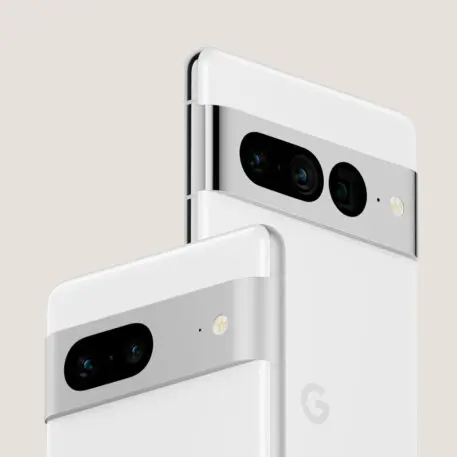
This is Google’s vision of “ambient computing”—also called “ubiquitous computing,” “quiet computing,” and “calm technology”—an idea first popularized by Mark Weiser at Xerox PARC in the 1980s. In the same magical space that inspired Steve Jobs to build the mouse and graphical user interface behind the Macintosh, the late Weiser envisioned how computers would one day weave so deeply into our lives that they disappeared. The benefit was that, if someone wasn’t chained to their desktop computer, they might be more social again. He saw ubiquitous computing as a way of breaking the “computer addict” and negating “information overload.”

“Ambient gets the tech out of your way so you can live your life while getting the help you need,” said Osterloh. “It doesn’t matter if you’re typing, talking, or tapping: The tech in your life should work together seamlessly.”
But seamlessness isn’t the only defining idea of ambient computing; its end goal was never to put your content on more screens more easily, but to encourage those screens to disappear altogether.
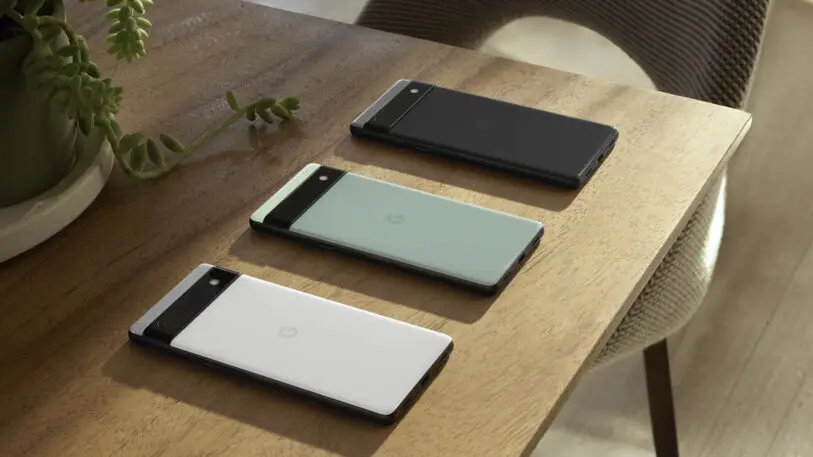
The origins of ambient computing dreamed big
Today, Natalie Jeremijenko is a celebrated artist and an associate professor of art at NYU. But 20 years ago, Weiser hired Jeremijenko to work with him at Xerox PARC. He was inspired by her PhD work, which was a smart prosthesis for a tree.
While most of PARC was obsessed with recreating the world of Star Trek, Jeremijenko bought deeply into Weiser’s more nuanced vision of the future. It was a philosophically poetic, but often crude, technical illustration of what another model for computing could be. Without the countless sensors, well-trodden Wi-Fi, or Bluetooth standards we have today, Weiser had to invent his own technologies just to demonstrate the tip of what would be possible when objects could communicate via invisible networks and signal important information to us in the background. Even his illustrations of what ambient computing could look like—he built tablets that could network with desktop computers, experimented in building precursors to Zoom, and wrote rich narratives imagining how you’d scan a newspaper with a pen to send passages to your email—clearly fell short of his greater idea.
“So much of what ubiquitous computing was, was to break the screen imperative,” says Jeremijenko.
To Weiser, ambient computing was the exact opposite of virtual reality, and it was so much more ambitious than the apps we have on our phones today, listing weather, stocks, and social media.
“What Mark and I had spoken a lot about is, when you’re in the forest, you’re processing a whole lot of information, but it doesn’t feel like that eye-straining, horrible, icky, feeling of dealing with thousands of emails at once,” says Jeremijenko. “It’s actually a very information-rich environment, but relaxing and invigorating as opposed to the reverse.”
But what does that mean? Jeremijenko snuck into Xerox PARC in the middle of the night—her only way to eschew critics—to install her own ambient computing device from the drop ceiling. Called Livewire (it’s also known as Dangling String), it was an 8-foot-long string of plastic attached to a motor. It plugged into the office’s internet network, and as traffic on that network spiked, it would spin faster. Without having any technical knowledge, or even looking directly at it, one could sense the invisible bits of information flowing through the office.
Within a day, Livewire became an integral part of the office. If the network was slow, people would peak their heads out and check it to see if someone was hogging all the bandwidth. She says it became something people would “comment upon like the weather.” On one occasion, Jeremijenko says that Weiser was working late, but after hearing the faint whir of the string outside his office, he was alerted to a problem.
“The next day, I came in, and he said, ‘We had a hacker break in last night, and I knew because of the Livewire.’ He hadn’t even known he was paying attention to it. Somehow it changed states, because the hacker was trying to break in over and over and over in this regular way,” says Jeremijenko. “That’s what ambient displays do well. They tell you state changes really well. You don’t know you’re listening to the fridge until it turns off or on, or stops.”
Jeremijenko still contends that the problem with Weiser’s vision isn’t that it’s wrong. We do make sense of the world through the subtlest of quiet cues, and people are naturally drawn to thinking in this way. “But that’s not in geek culture,” says Jeremijenko. Geek culture is just the thing that led Samsung to put a silly screen in its refrigerators, replacing what was once conveyed by a hum.
When Weiser left Xerox PARC, frustrated that the photocopier-based business of Xerox didn’t mesh well with his ideas, his old colleagues painted him as an optimist who’d grown resentful. Livewire, called an embarrassment by some internally, was uninstalled immediately. Weiser died in 1999 at the young age of 46. And yet, his vision for ambient computing lived on—and it’s actually alive and well at Google today, even if those products aren’t shipping.
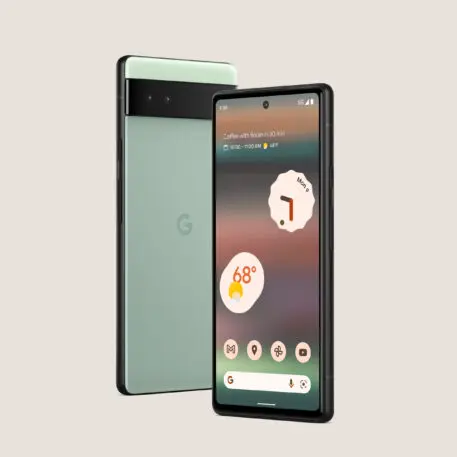
Ambient computing became the best idea that never took off
Over the next decade, computers got small. The iPod and, more so, the iPhone, imagined computing not as ambient, but as so pocketable that it eliminated the need for computers everywhere around you. If you could carry the world’s information on your person, wasn’t that even better than having a bunch of abstract strings spinning in your home?
But then history repeated itself. We got addicted to small screens in our pockets instead of bigger screens at a desk. Constantly tracked, we lost our privacy—while maintaining privacy was always a hallmark of Weiser’s vision—and thanks to push notifications, our phones hacked our cortisol. We chased “likes” on the small screen instead of life in the big world.
Designers and technologists have largely admitted these issues. All of the major technology companies pursued voice control (Siri, Alexa, Cortana, and the Google Assistant) to offer a more nuanced, human way of communicating with computers. But I’d argue these have improved accessibility while failing to do much more, because these AIs lack any real intelligence. You’re still talking to a computer, cueing it to listen, and finding the right keywords to make it do what you want. Talking to Alexa never really feels like you’re effortlessly talking to a friend, or even a pet.
On top of voice, Microsoft began tracking our body motion with its Kinect camera for Xbox. That solved some of the input problems with ambient computing—Microsoft can actually read your emotional states and gestures these days—but it didn’t solve the output problem. As in, how does Microsoft serve that information, when relevant, back to you in a way that enriches your life? And, again, without a screen?
While the tech giants have largely missed the point, ambient computing projects have been knocking around for the last 20 years, just under the radar of the mainstream. One of the most compelling of the last 20 years was the Little Printer (2012), by the now-defunct London design agency Berg. It was a modified receipt printer, that printed your own custom little newspaper of messages and stories, a couple times a day.
“There’s a slightly nightmarish vision of a world full of glistening, super high-res retina displays all over your house, a sort of Total Recall world where everything’s a TV,” said Berg’s Jack Schulze in 2012. “These objects have to live in your home, connected, but they can’t all be ringing and pinging, winking and flashing all the time. They have to be kind of calm.”
Google has actually been working on making its interfaces calmer, from wrapping its gadgets in soft textiles, to using AI to mute the notifications you frequently dismiss, to building Android to match the same earth tones found in your family photos. And, while the latest release of Pixel gear doesn’t demonstrate this, the company has backed some of the most interesting ideas in ambient computing of the last few years.
In 2019, at the Milan Furniture Fair, Ivy Ross, Google’s VP of hardware design, debuted a screenless wristband. You wore it, and it tracked your vitals across three carefully curated rooms. Just by sitting in these spaces, Google demonstrated to visitors how their physiology reacted. They found there was no optimal room, because we all have different reference points for smell, sound, and furniture. But the effort alone demonstrated Ross’s deeper concern about computation’s future.

“We’re really inspired by the way people understand each other,” said Leonardo Giusti, head of design at ATAP. “When you walk behind someone, they hold the door open to you. When you reach to something, it’s handed to you. As humans, we understand each other intuitively often without saying a word.”
Along the same lines, Google partnered with the UK studio Map Project Office to develop a series of objects called Little Signals—a name that screams homage to the Little Printer. These objects alert you without, you know, ALERTING you. Instead of flashing, these objects lightly tap a table, or puff air to signal information. They’re physical reactions, cognizant of our environment and ourselves.
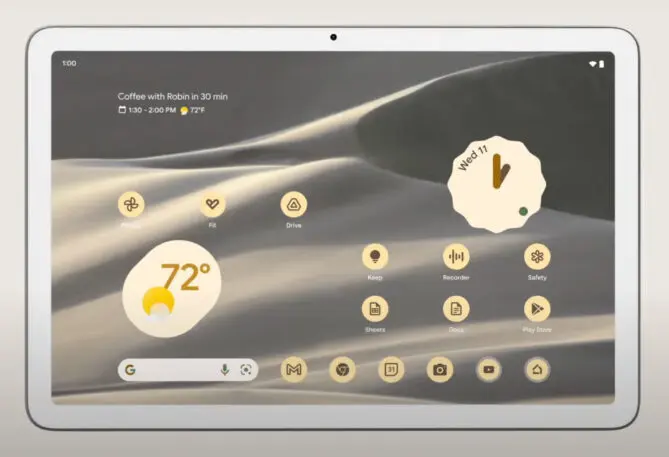
Google’s experiments aren’t real products
What I find so deflating in Google’s ambient computing vision is not how designers at Google are thinking in concepts, but what its managers are shipping in products. I can only imagine the frustration of developing these ideas internally, only to hear the next big thing is Google’s very own tablet, shipping in 2023. And I imagine the only reason Google is prioritizing a tablet is that its ROI is predictable: It’s much easier to model the sales trajectory of another Android touchscreen than a Little Printer.
Ultimately, Google’s vision for ambient computing in 2022 looks a whole lot like Microsoft’s vision for ambient computing from 2013: It’s a buncha screens, even if Google marketers flip the phones upside down so you don’t notice. Meanwhile, the world is waiting with bated breath for Apple to show its augmented reality headset—ostensibly a screen now glued to your eyeballs to appear anywhere in the world at any time.
In one of his seminal papers, Weiser opened with the bold proclamation that “the most profound technologies are those that disappear. They weave themselves into the fabric of everyday life until they are indistinguishable from it.”
Weiser once believed those technologies looked like a forest. But as our forests burn and the world builds back as one big sports bar, perhaps Weiser predicted the future in an unintended way: Perhaps the screens have woven themselves so deeply into our lives, that our lives are indistinguishable from the screens.
Recognize your brand’s excellence by applying to this year’s Brands That Matter Awards before the early-rate deadline, May 3.
